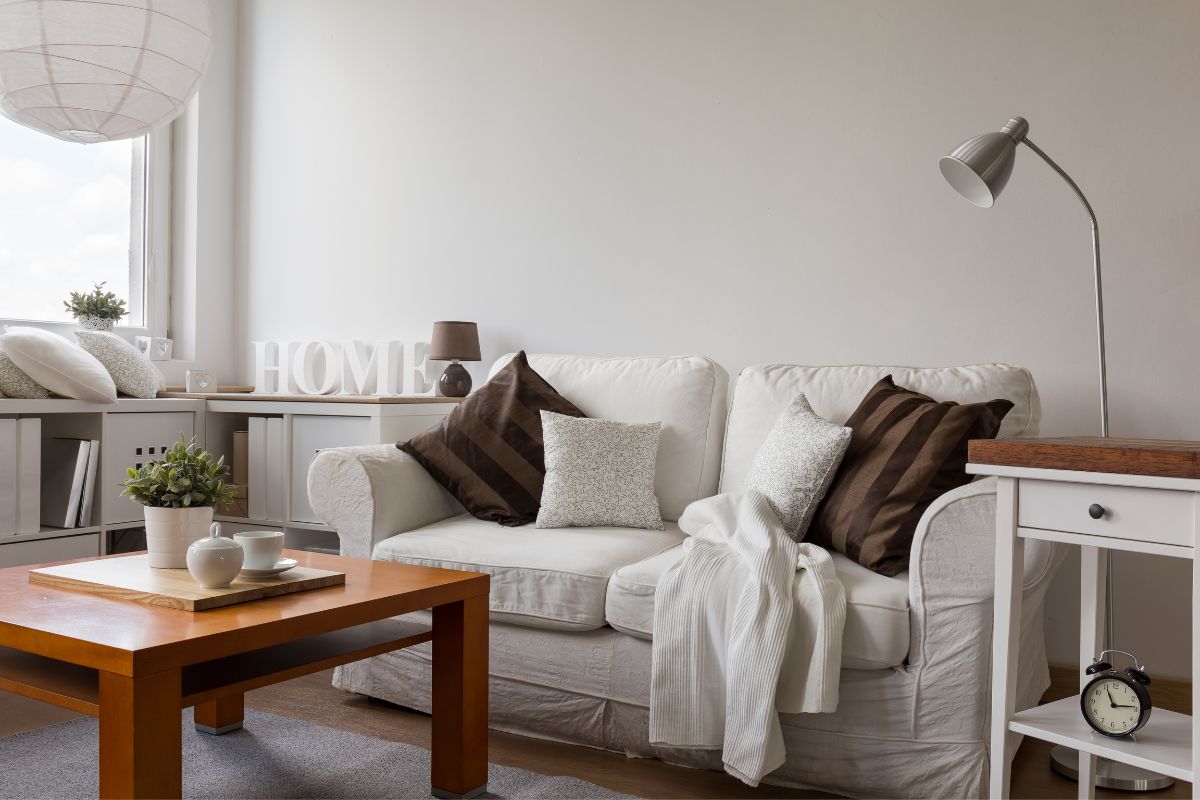Understanding Personal Space and Boundaries
Beyond only physical separation, personal space is essential to everyone's comfort and wellbeing. If you wish to maintain your living space, it is crucial that you recognize and maintain a personal space.
Defining Personal Space
The boundaries — both emotional and physical — that people need to feel safe and secure are known as personal spaces. It includes areas like bedrooms, personal items, and even time alone. By clearly defining what personal space means to each individual, misunderstandings can be minimized. This clarity helps create an atmosphere where everyone feels respected and valued.
Setting Boundaries
It's crucial to talk about boundaries and establish them with your cohabitant. Sitting down and having an honest conversation about each person's wants and preferences is one efficient method. This might include delineating private areas, times for solitude, or rules about borrowing personal items. Having these conversations can prevent disputes and promote mutual respect. Setting clear borders provides that both parties know what to expect, making daily relations softer and more pleasant.
Respecting Differences
It’s essential to appreciate each other's boundaries and distinctions. No two people are alike, and what feels comfortable for one person might not be the exact for another.
If you understand these differences, will to compromise can lead to a more pleasant living situation. Respecting borders isn’t just about avoiding conflict; it’s about making a space where everyone feels comfort.
Effective Communication Strategies
A healthy relationship is built on effective communication, particularly when living together. In addition to fostering a deeper understanding between cohabitants, candid and open communication can assist address problems before they worsen.
Open and Honest Dialogues
Develop an open, honest conversation with your cohabiting partner and promote it. Talk about expectations, problems, and opinions on a regular foundation to confirm that everyone is in agreement. When issues arise, handle them calmly and honestly. If you improve mutual understanding and build trust through open communication, it raises everyone's standard of living.
Active Listening
Active listening entails listening intently to what the other person is saying, giving a proper reply, digesting it and remembering it. Respecting one another's emotions and attending to each other without interjecting is important. In addition to fostering a stronger bond and more lucid communication, this approach makes the speaker feel respected and heard.
By practicing active listening, cohabitants can settle conflicts and build stronger relationship.
Conflict Resolution
Even with the best choices, conflicts can occur. Having strategies in place for settling conflicts can keep harmony in shared living spaces. When a conflict appears, take a break to chill off if required, then approach the problem respectfully.
Dividing Responsibilities Fairly
Fair division of responsibilities is crucial in maintaining harmony in shared living spaces. 34% say their partner purposefully does home chores poorly to avoid doing them in the future, so clear and fair distribution of tasks ensures that no one feels overburdened or underappreciated.
Sharing Chores
Improper management of household activities can lead to a considerable source of strain. Decide on a division of chores early on in the discussion. This could involve tasks like cooking, cleaning, and grocery shopping. Honest task sharing secures that each person donates equally, bypassing resentment and promoting a sense of teamwork. Equitable distribution of household tasks fosters a more agreeable and collaborative living space.
Flexibility and Adjustment
A chore plan should be created in order to ensure that all tasks are completed on time and to hold everyone accountable. Create a list of all the things that need to get done and assign them according to preferences and availability together.

Establishing Common Goals and Priorities
Setting common goals and priorities can align efforts and create a shared vision for the living space. This practice fosters unity and a sense of purpose.
Shared Vision
It's necessary to have a common idea for your living area. This could involve particular development objectives, the atmosphere you want to create, or the way you want your house to feel. It is guaranteed that everyone is working toward the same goal by talking about and coming to an agreement on this common vision. A common goal promotes harmony and a cooperative mindset, which improves life in general.
Apps and websites like SpareRoom can make the process of finding a roommate who shares your vision so much easier. SpareRoom, in particular, offers advanced search filters to help you find roommates who align with your personal goals, interests, and priorities, helping establish harmony right from the get-go.
Goal Setting
As soon as you have a common vision, establish priorities and precise targets. This could be anything from keeping the area tidy and orderly to furnishing the apartment or setting aside money for new furniture. Verify that these objectives are doable and reasonable. Establishing shared objectives helps you both have something to strive for, enhancing your relationship and your living space.
Nurturing Emotional Connection
Maintaining an emotional relationship is vital to a healthy and harmonious living arrangement. Emotional support and shared experiences can seriously improve relationship harmony.
Quality Time
Establishing and maintaining a healthy relationship requires spending meaningful time together. Try to spend time doing something you both enjoy, such as cooking, watching movies, or going on walks. Spending time together strengthens your relationship and helps you make wonderful memories. Quality time fosters a deeper emotional connection, making your living situation more enjoyable and satisfying.
Creating Traditions
Setting common customs or practices might support the development of a feeling of continuity and unity. This could be monthly house gatherings, weekly game nights, or yearly festivities. Customs give cohabitants a sense of routine and consistency, which strengthens their emotional bond. You may build a stronger connection and a common history by creating and upholding customs.
Emotional Support
In a shared living setting, supporting one another emotionally is essential. Be supportive of one another in trying times, encourage one another, and share in victories. In addition to strengthening your bond, emotional support makes your home cozy and safe. By showing empathy and understanding, you enhance the overall harmony of your shared home.
Legal Documents and Agreements
Having clear legal documents and agreements can safeguard against misunderstandings and conflicts, providing a framework for your shared living arrangement.
Importance of Legal Documents
Legal arrangements, like leases or rental contracts, explicitly state each party's obligations and rights. In order to create official agreements that both parties are required by law to abide by, these documents are essential. Verify that each party has read, comprehended, and signed all relevant legal documents. Formal agreements serve as a clear point of reference in the event of a disagreement and aid in protecting everyone's interests.
Using a Cohabitation Agreement Template
For those living with a partner or roommate, a cohabitation agreement can be particularly beneficial. This document outlines the financial and logistical aspects of sharing a living space, including rent, bills, and household responsibilities. Using a cohabitation agreement template ensures that all important factors are covered and agreed upon. A cohabitation agreement provides a clear framework for your living arrangement, reducing the likelihood of conflicts and misunderstandings.
Practical Tips for Harmonious Shared Living
Practical strategies and tips can make shared living more organized and pleasant. Clear organization and conflict management are key factors in maintaining harmony.
Organizing Shared Spaces
Maintaining tidy and orderly shared areas has a big impact on how harmonious your living space is. Together, come up with a plan that benefits both of you. Establish guidelines for upholding cleanliness and designate particular spaces for shared objects.
An organized space reduces stress and makes daily living more pleasant, contributing to a harmonious atmosphere.
Dealing with Conflicts
Even with the best efforts, conflicts may arise. It's critical to resolve these disputes quickly. Strive to comprehend one another's viewpoints, handle disagreements coolly and politely, and cooperate to find a solution. Good dispute resolution keeps things from getting worse and preserves harmony in the home. You may maintain harmony and mutual respect in your relationship by handling problems in an efficient manner.
Creating a Comfortable Environment
Creating a comfortable living environment is key to maintaining harmony. This includes factors like temperature, lighting, and overall ambiance. Discuss and agree on what makes the space comfortable for both of you. Making your home a pleasant and inviting space enhances the overall living experience, promoting peace and well-being.
Conclusion
Establishing clarity and understanding in shared living spaces is essential for maintaining relationship harmony. By respecting personal space and boundaries, practicing effective communication, dividing responsibilities fairly, setting common goals, nurturing emotional connections, balancing personal and shared activities, and implementing practical strategies, you can create a peaceful and cooperative living environment.






Share: